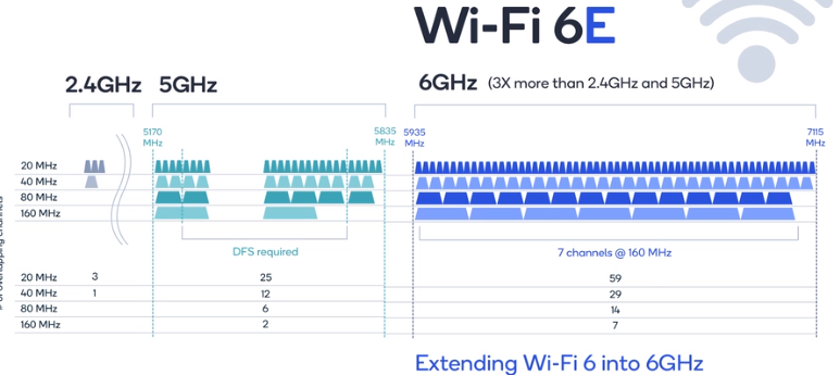Decoding Wi-Fi 6E: A Future-Proof Upgrade for Your Home Network
09-07-2023
The Wi-Fi 6E standard is the latest advancement in wireless technology, offering faster speeds, lower latencies, and access to a wider spectrum. However, to reap these benefits, you'll need a new router and Wi-Fi 6E-compatible devices. If you're considering an upgrade, here's what you need to know about the new Wi-Fi 6E standard and its impact on home and office wireless networks across the US.
Understanding Wi-Fi 6E and Its Advantages
Introduced by the Wi-Fi Alliance in 2020, Wi-Fi 6E is a designation for IEEE 802.11ax (Wi-Fi 6) products that support the 6GHz wireless spectrum. This means Wi-Fi 6E offers faster speeds and lower latencies compared to Wi-Fi 6 and previous versions. The original Wi-Fi 6 standard was restricted to a wireless spectrum covering only the 2.4GHz and 5GHz bands, but with the FCC's decision in April 2020 to open up the 6GHz band for unlicensed use, Wi-Fi 6E devices can now tap into a larger range of airwaves. This results in less signal interference and an improved user experience, especially in congested areas with multiple competing networks.
Wi-Fi 6E: Faster Speeds and Lower Latencies

The 6GHz band that Wi-Fi 6E devices can access allows for internet speeds greater than 1Gbps. In addition, the expanded spectrum also means lower latency for online activities requiring an instantaneous response, such as gaming, video calls, or virtual computing sessions. The benefits of Wi-Fi 6E become most apparent in terms of home network capacity. With less spectrum congestion and the ability to handle multi-gigabit Wi-Fi capacity, Wi-Fi 6E offers a smoother, more efficient online experience, even when multiple devices are connected and being used simultaneously.
Challenges With Wi-Fi 6E
Despite its benefits, Wi-Fi 6E also has its challenges. The 6GHz wireless spectrum it uses features shorter wavelengths which, while great for fast data transfers, struggle to travel long distances and can be easily obstructed by physical barriers like walls or floors. Moreover, due to the presence of existing licensed users like satellite services and wireless mobile carriers, the FCC has imposed power limits on Wi-Fi devices operating on the 6GHz band. As a result, the range of the 6GHz signal is significantly reduced, although this is expected to improve once the FCC finalizes the Automated Frequency Coordination system, which will allow increased power levels for devices on this band.

Moving Forward with Wi-Fi 6E
Given its potential and the ongoing efforts to address its limitations, Wi-Fi 6E is shaping up to be a future-proof technology for wireless connectivity. However, most of the Wi-Fi 6E devices currently available are targeted at US customers, as many countries are yet to open up their 6GHz band for commercial use. To use Wi-Fi 6E, you'll need a Wi-Fi 6E router and client devices that support the standard. If you're considering an upgrade, be sure to factor in the current range of limitations. While the technology offers enhanced speeds and lower latencies, these benefits are most noticeable when the client device is in the same room as the router.
As more Wi-Fi 6E-compatible devices become available and prices continue to decrease, upgrading to a Wi-Fi 6E router is a viable option for those in the market for a new standalone router. However, if you're looking for a network solution that covers a large area, such as your entire home or office, a mesh Wi-Fi system might be a more suitable option due to its ability to steer connected clients to the appropriate band based on factors like distance and signal interference.












Leave a comment
Your comment is awaiting moderation. We save your draft here
0 Comments